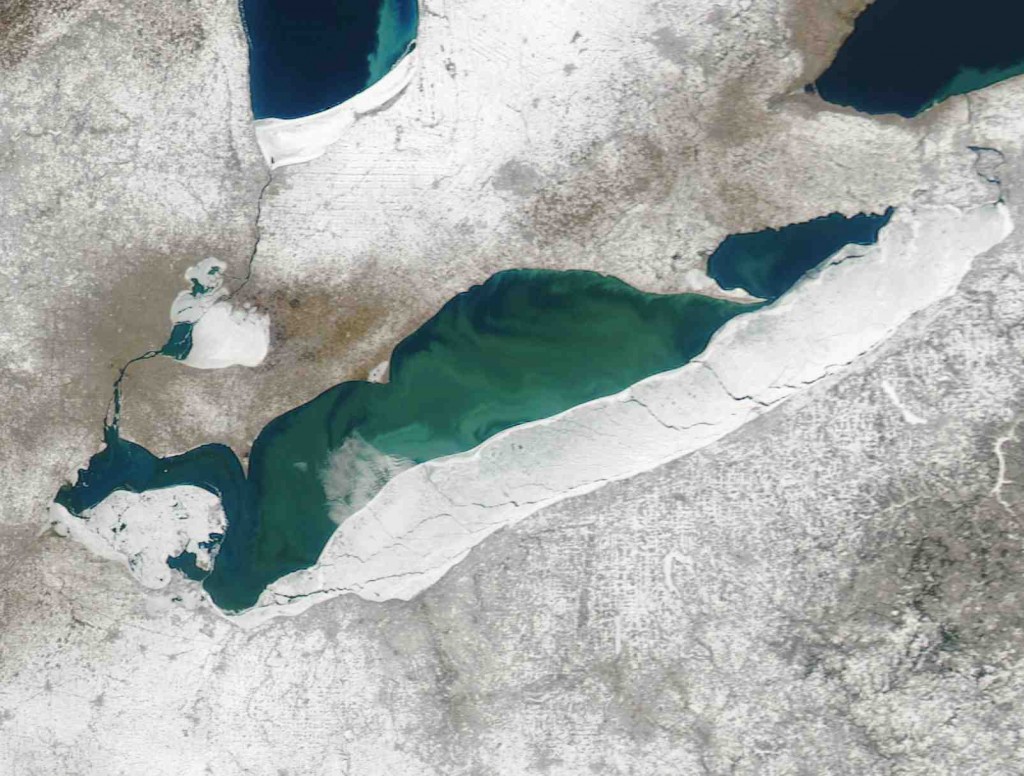
John Hartig is a refuge manager at the Detroit River International Wildlife Refuge Large Lakes Research Station
By John Hartig
Editors note: Yesterday columnist John Hartig looked at the environmental successes on the Detroit River and western Lake Erie. Today he looks at the challenges that lie ahead.
The ecological recovery of the Detroit River and western Lake Erie is remarkable, but the monitoring programs in this corridor also document many environmental and natural resource challenges.
Six of the most pressing challenges include:
- population growth, transportation expansion and land use changes
- nonpoint source pollution
- toxic substances contamination
- habitat loss and degradation
- introduction of exotic species
- greenhouse gases and global warming
Population Growth, Transportation Expansion, and Land Use Changes
Over the past 60 years, a substantial portion of Detroit’s human population has migrated out from Detroit to the suburbs, causing urban sprawl.
Urban sprawl increases habitat loss and degradation, and nonpoint source pollution.
Nonpoint Source Pollution
In the last decade, monitoring programs documented an increase in chloride concentrations in water samples from the Monroe Water Intake, a sharp increase in dissolved reactive phosphorus in water samples of the Maumee River, and an increase in total phosphorus concentrations in water samples of the Union Water Intake in Kingsville, Ontario.

Zebra mussels washed up on Lake Erie beach. Photo courtesy of EPA's Great Lakes National Program Office
Scientists believe the introduction of zebra and quagga mussels and/or nonpoint source pollution may be causing these changes in water quality.
Food web changes resulting from the introduction of zebra and quagga mussels and increased phosphorus from nonpoint source pollution are also possible causes of the resurgence of algal blooms.
Toxic Substances Contamination
Although contaminant levels in biota have declined, health advisories remain in effect on the consumption of many species of fish.
Both humans and wildlife continue to be exposed to low-level toxic substance contamination and continue to be at risk.
Contaminated sediments in the Trenton Channel of the Detroit River, the lower Rouge River, the lower River Raisin, and the lower Ottawa River continue to contribute to use impairments. Contaminated sediment cleanup is currently underway in the lower Ottawa River.
Habitat Loss and Degradation
Detroit River and western Lake Erie have lost 97 percent and 90 percent of their coastal wetlands to development, respectively.
Despite habitat conservation efforts, there remains considerable concern over the continuous and incremental loss and degradation of habitat in southeast Michigan and southwest Ontario.
Introduction of Exotic Species
Exotic species like zebra and quagga mussels, round gobies, spiny amphipod, and viral hemorrhagic septicemia virus have continued to impact the corridor, resulting in many economic, ecological, and societal impacts.

Lake Erie's average winter ice cover is decreasing as the climate changes. Photo: UW-M Space Science and Engineering Cener
Global Warming
Evidence of global warming can already be found in the decrease of average winter ice cover on Lake Erie.
Less winter ice cover increases evapotranspiration that contributes to reductions in water levels. Scientists have predicted that over the next 70 years, Lake Erie water levels may drop by 1.5 meters, resulting in a 4 percent reduction in lake surface area and a 20 percent reduction in water volume.
Such reductions would move the Lake Erie shoreline lakeward by distances of up to 6 kilometers.
Concluding Thoughts
Clearly, more needs to be done to fully realize long-term goals of restoring the physical, chemical, and biological integrity of the Detroit River and western Lake Erie.
However, the progress achieved to date, the informed, engaged, and vocal stakeholders and nongovernmental organizations involved, and the broad-based desire to create a sense of place in these watersheds bodes well for further improvement and recovery.
Scientists worry about societal complacency. The 1960s were clearly a “tipping point”. There was an urgent need to take action to prevent irreversible damage to our ecosystems. We cannot afford to reach another “tipping point.”
We need to sustain our research and monitoring programs and ensure that they are closely coupled with management efforts. Further, this resulting scientific information must be translated for decision-makers and laypersons, and broadly disseminated.
We need to continue to remediate and restore these ecosystems using all tools in the toolbox.
With major new funding coming from the Great Lakes Restoration Initiative, we must make sure that a high priority is placed on monitoring and research to measure changes, quantify program effectiveness and evaluate predicted benefits so mid-course management corrections can be made, if needed.
We also need to invest in capacity building, sustain and grow nongovernmental organizations and place a higher priority on education to help develop the next generation of environmentalists, conservationists, and sustainability entrepreneurs.
For more information on changes in the Detroit River and western Lake Erie over time, including the ecological recovery, visit the EPA on the web.